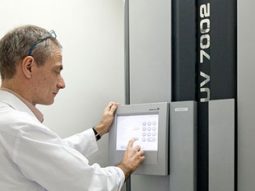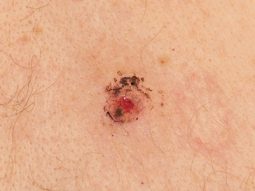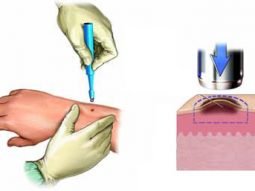A skin biopsy is when your dermatologist removes a piece of skin and sends it to a pathology laboratory where a histopathologist looks at it under the microscope.
WHY DO YOU NEED TO HAVE A SKIN BIOPSY?
Skin biopsies are performed to help with the diagnosis of your skin condition. Sometimes, different skin conditions can look similar to the naked eye so additional information is required. This is obtained by looking at the structure of the skin under the microscope after the cells have been stained with special coloured dyes.
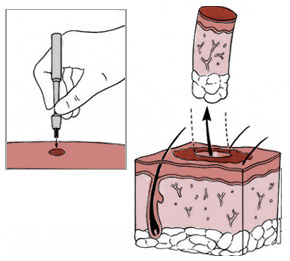
There are two situations in which this usually occurs:
- To distinguish between different types of rashes or skin lesions. Your dermatologist maybe considering a number of possible diagnoses, and the skin biopsy provides additional information in this process.
- The dermatologist suspects you have a skin cancer. A biopsy is taken to confirm that the skin cancer is present. The biopsy may also give information on the type of skin cancer, which may determine the best treatment.
WHAT IS INVOLVED IN HAVING A SKIN BIOPSY?
Your dermatologist will explain to you why the skin biopsy is needed and the particular procedure involved.
Shortly before the skin biopsy, you will be given a small injection of local anaesthetic to make the area numb. This usually stings momentarily but the skin quickly becomes numb.
The dermatologist will perform the skin biopsy. You may feel a pushing sensation in the area where the skin biopsy is being performed but there should not be any pain. You should tell the doctor if the procedure is painful during the biopsy.
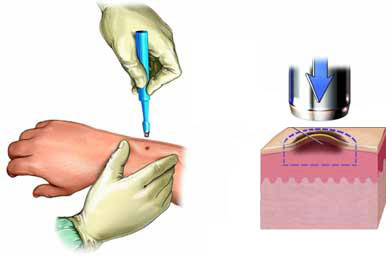
You may have stitches depending on the type of skin biopsy. Your dermatologist will tell you when to get them removed.
A dressing will usually be applied to the site of the biopsy. Your dermatologist will give you some advice about caring for your healing wound before you go home.
Your dermatologist will arrange to tell you the result of the biopsy. It usually takes about 10 days for the dermatologist to obtain the result from the pathology laboratory, but can sometimes take longer if special stains are required. There will be a small scar left after the skin biopsy site has healed.
PUNCH BIOPSY
Punch biopsies are quick, convenient and usually only produce a small wound. They allow the pathologist to get a full thickness view of the skin. More than one punch biopsy may be required depending on the condition being investigated.
The punch biopsy blade takes a small round core of tissue ranging from 3mm to 5mm in diameter.
Sometimes a stitch will be required or, if the wound is small, it may heal adequately without a stitch.
SHAVE BIOPSY
A shave biopsy may be used if the skin lesion is suspected to only affect the top layers of the skin (epidermis and dermis)
The dermatologist will take a very superficial slice of skin from the area affected with a scalpel blade. There are usually no stitches required after a shave biopsy but there will be a small scab that should heal in 1-2 weeks depending on the skin lesion involved.
INCISIONAL BIOPSY
Incisional biopsies are used when a larger piece of skin is needed to make a correct diagnosis. The dermatologist will cut out a piece of skin with a scalpel blade. Stitches are usually required after an incisional biopsy.
COMPLICATIONS
Skin biopsy is straightforward, minor surgery, so complications are uncommon. But occasionally, the following may arise.
- Unexpected bleeding may occur (especially in those with a bleeding tendency, or taking blood thinning medications such as warfarin or aspirin). For example, unintended arterial puncture on the forehead or temple is not uncommon; it may take time and pressure to stop the bleeding, and sometimes the wound may need to be opened up to cauterise or ligate the bleeding vessel.
- Wound infection affects surgical wounds in about 1 to 5% of surgeries. It is more likely in ulcerated or crusted skin wounds. Antibiotics may be necessary to clear this up. Infection is more common in diabetics, elderly patients and those on immunosuppressive medicines.
- Delayed healing. This is most likely in biopsies taken from the lower legs, especially in skin conditions that predispose to ulceration after skin injury.

 Vi
Vi 
